I love to travel and spend time outdoors. But I’ve struggled with luggage and straps at airports and hotels everywhere. Over the years, I have tried many ways to keep my bags safe, neat, and under the airline’s weight limits.
Luggage straps have many uses. They keep your things safe, discourage tampering, and give you peace of mind when you travel.
Through trial and error, I’ve figured out what works and what’s a waste of money. One question I get asked often, especially lately, is whether your luggage straps are TSA-approved.
In this guide, I will share different types of luggage straps and how to choose the perfect one for your needs. I’ll also share some valuable tips and tricks. Let’s go to start.
Understanding TSA Regulations
As an avid traveler, I’ve hauled my fair share of luggage through airports. Through trial and error, I’ve learned what’s allowed and what isn’t. The rules of strapping, buckling, or securing your bags aren’t always clear. So, are luggage straps TSA-approved or not?
The short answer is yes; the TSA permits most luggage straps. But there are a few regulations you’ll want to keep in mind:
Straps must allow bags to be opened for inspection. Avoid straps that are permanently affixed or require tools to remove them. Buckles, clasps, and Velcro closures are typically fine.
- Straps should not contain any prohibited items. It includes sharp objects like knives, tools, or weapons.
- Bags must still fit through the X-ray machine with straps attached. Ensure any straps don’t obstruct the bag or prevent it from lying flat for screening.
- Be prepared for extra screening. Secured bags may need additional inspection to access the contents. I’ve had strapped bags opened and the contents ruffled through. It isn’t enjoyable, but security first!
- Consider TSA-recognized locks. If you want to lock your bag, use a TSA-approved lock. Regular locks will be cut off during inspection.
So go ahead and strap or buckle your bags to your heart’s content. Follow the rules, use approved closures, and be ready for more screening.
Are Luggage Straps Allowed on Flights? Exploring TSA Regulations
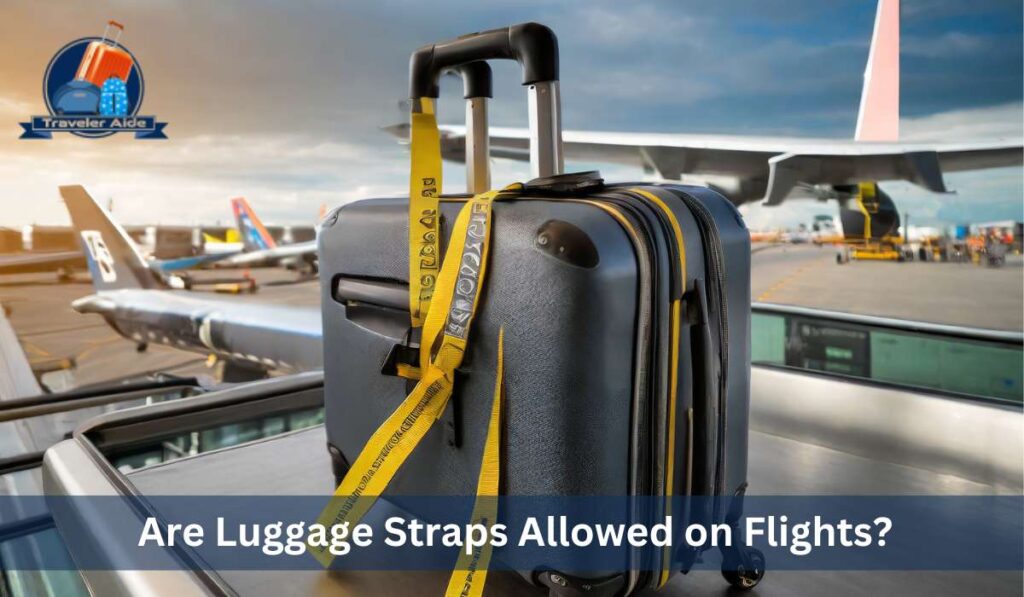
When I pack for a trip, I use my luggage space efficiently. It often involves attaching extra bags or tightening loose straps to compact everything. But I’d like to know whether those extra straps and bags would make it through airport security. Here’s what I’ve learned from experience about using luggage straps when flying:
According to the Transportation Security Administration (TSA), most standard luggage straps. Bags are permitted in carry-on and checked baggage. The TSA mainly concerns prohibited items inside your luggage, not the bags or belts. I’ve gone through airport security many times without any problems, even with secured luggage.
However, there are a few exceptions to be aware of:
1. Avoid any straps or locks that cannot be opened for physical inspection of your bags. TSA officers might have to unlock and open your luggage for screening. Make sure your straps and locks can be easily undone and secured again.
2. Do not use straps or more bags that add to the size of your luggage. Your bags must still meet the standard carry-on dimensions for the airline you’re flying. Oversized luggage may need to be checked.
3. Avoid suspicious or dangerous-looking straps, like those with exposed wires or sharp Edges. These could prompt extra screening and delay your trip.
4. You may need to remove some straps or extra bags during screening for X-ray scanning. After going through the X-ray machine, be ready to unfasten and secure your luggage again.
Following the rules, you can use luggage straps and extra bags when you fly. The TSA approves them for both carry-on and checked luggage.
Types of Luggage Straps and TSA-Approved
When securing your luggage, it’s essential to consider if the straps you’re using are TSA-approved. It’s important to know which straps are TSA-approved to avoid delays or damage to your bags.
1. Buckle Straps
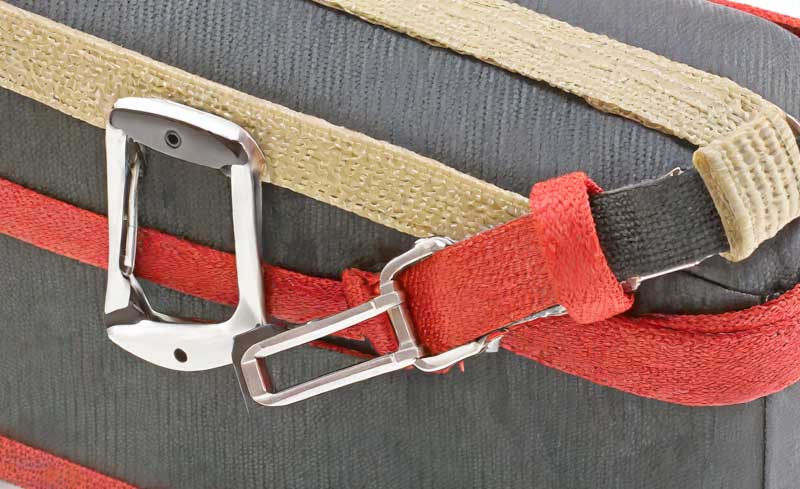
The most common straps are basic buckle straps. These straps have a plastic buckle that can be easily unfastened for TSA inspection. I prefer reinforced buckle straps with a sturdy, rugged design for extra peace of mind. These have served me well on many adventures.
2. Zip Ties
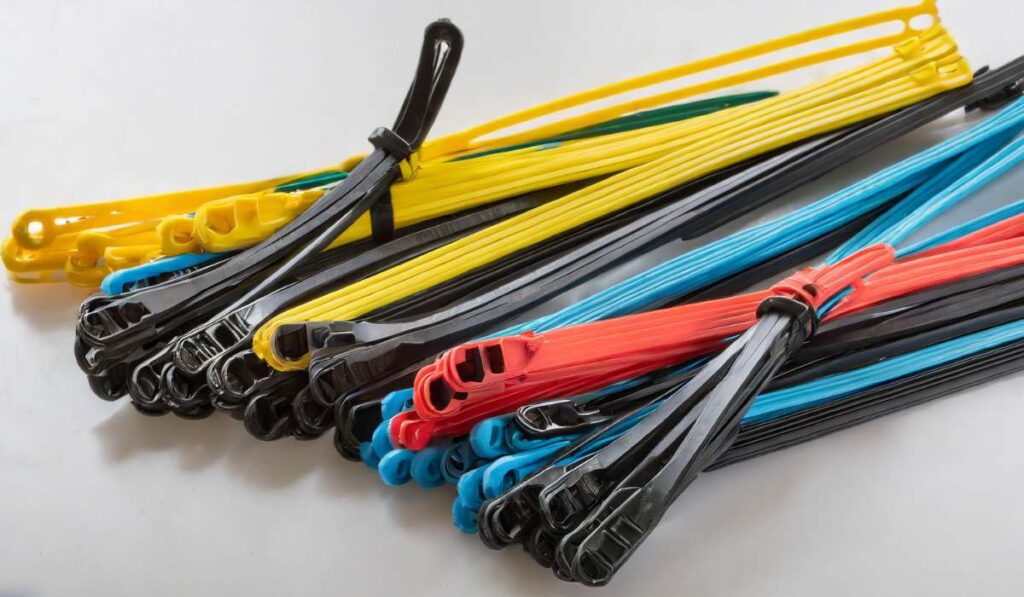
Zip or cable ties are not recommended as luggage straps and are not TSA-approved. Zip ties are convenient, but removing them requires cutters. This can risk damaging your luggage or its contents. Avoid the frustration of cut zip ties and a damaged suitcase by learning from my experience. I made this mistake once.
3. Elastic Bands
Some luggage has built-in elastic bands or straps to keep everything securely closed. These types of straps are TSA-friendly since they can be stretched open for easy access. But, elastic can wear out over time and with repeated use. For long-term or heavy-duty luggage, I prefer a sturdier strap option.
4. Integrated Straps
Popular luggage brands, such as [Redacted], often include straps or belts to help secure items. These integrated straps are always TSA-approved and highly durable.
Bags with built-in straps cost more but are worth it for avid travelers. I’ve never had an issue with mine, and I expect many more adventures together!
Instead of using zip ties, choose strong straps that are convenient and meet travel regulations. These straps will make your journey smooth no matter where you go.
Benefits of using TSA-approved luggage straps
There are many benefits to using TSA-approved luggage straps when traveling. Here are a few of the most important
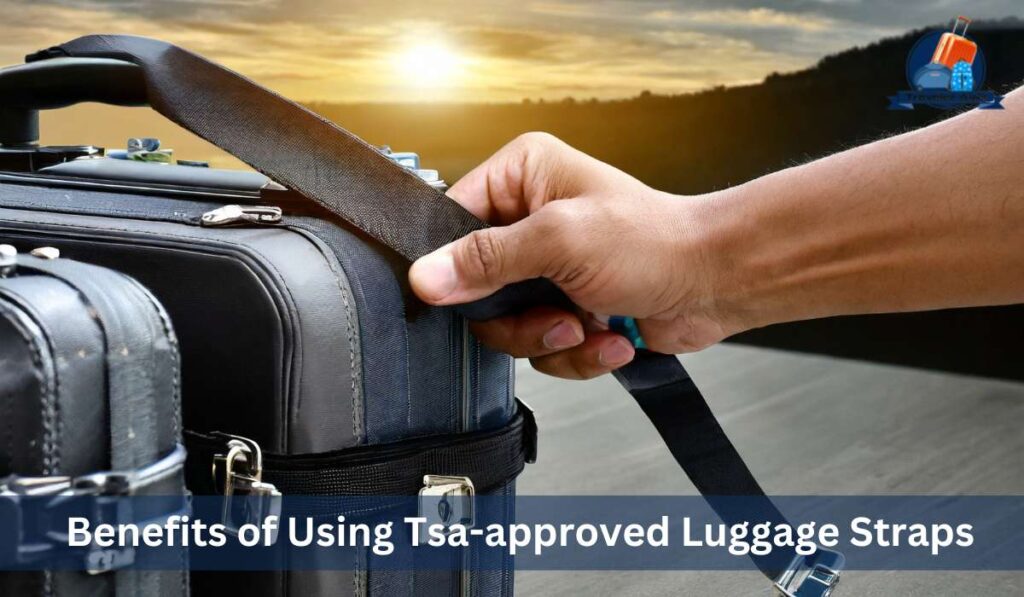
Security
The most significant benefit of TSA-approved straps is that they can remain on your luggage during security screening. You have to remove regular straps, bungee cords, and locks. This slows you down and risks losing or damaging them. TSA straps are made to be x-ray-friendly. Agents can check your bags easily without cutting them. It gives me peace of mind that my luggage will remain securely closed throughout the screening process and onto the baggage carousel.
Convenience
I can use TSA-approved straps to secure my bags before leaving home. Then, I can relax about them once I reach my destination. I don’t have to fumble with straps or locks at the security checkpoint or boarding gate. My hands remain free to show my ID and boarding pass, and I can quickly get through the airport. As a content writer and blogger, I appreciate any extra minutes I can gain!
Durability
High-quality TSA straps are built to withstand the rigors of air travel and repeated use. I’ve had some of my straps for years and taken them on dozens of trips with no signs of damage or wear. If you buy cheap straps, they will only last for a while. Instead, invest in sturdy ones that you can trust for your travels.
With all these benefits, TSA-approved luggage straps have become essential for me. They make packing and going to the airport easier, so I have more time to relax, get coffee, or work while traveling. TSA straps are well worth the small upfront cost for any frequent flyer.
What makes a luggage strap TSA-approved
When I started passing through airport security, I wondered if my straps were safe for carry-on luggage.
Through trial and error, I found that most basic luggage straps are TSA-compliant, but there are a few key things to remember. For starters, avoid any straps with metal buckles or clasps.
The TSA doesn’t allow metal parts because they can mess up X-ray scanners and metal detectors. Plastic buckles are your best bet.
Fabric straps without any hard or sharp parts are typically OK, too. I like adjustable nylon straps. They’re solid and easy to adjust when going through security. Avoid anything too thick, rigid, or abrasive that could damage other bags or the X-ray belt.
Regarding the X-ray belt, ensure any straps you use can easily fit through the scanner tunnel. I once had an oversized strap get stuck in the belt, holding up the line – not a fun experience! So keep strap widths under 1.5 inches to avoid issues.
Based on what I’ve seen, if a strap is flexible, adjustable, and the correct size. It will likely pass through airport security with no problems.
Before going to the airport, check the TSA website for the latest strap guidelines. It’s not worth the hassle of having your luggage pulled aside!
Conclusion
I have traveled and hiked for years. I can confidently say TSA-approved Luggage straps are safe. They’ve helped me at busy airports, on challenging trails, and in exciting cities.
So, As long as your straps are free of banned items and your luggage closes, the TSA won’t bother you. The straps provide extra security for your belongings, and who wants to avoid that when traveling? Do what gives you peace of mind.
If strapping up your luggage helps you feel prepared for your adventure, go for it. The TSA is there to keep us all safe, not stop us from using a few handy tools to make our trips more manageable. Get out there, strap up your bags, and enjoy your travels!

Hey, I’m Dorothy E. Turner! I’ve spent years exploring the world and diving deep into the travel scene. Along the way, I’ve developed a real knack for understanding what makes a great travel backpack. I’m passionate about sharing my expertise to help fellow travelers find the perfect backpack for their adventures.
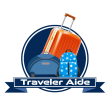
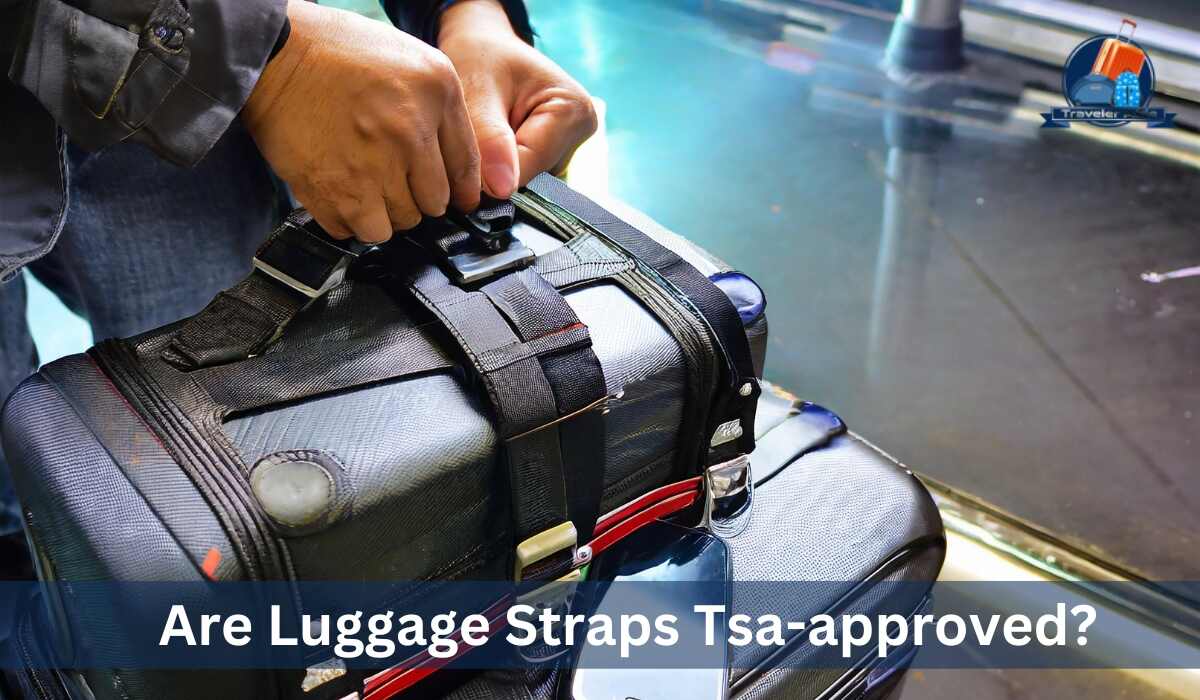
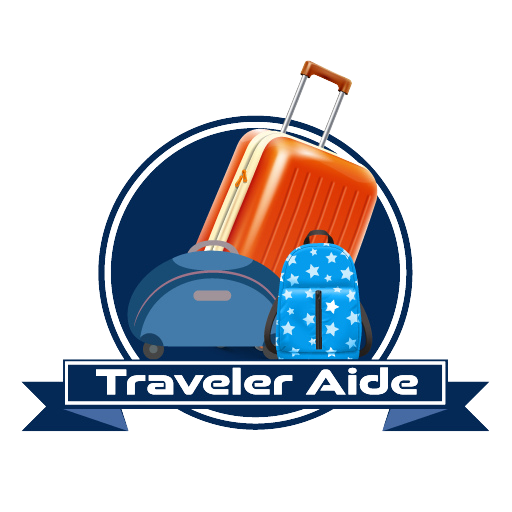
1 thought on “Are Luggage Straps TSA-Approved”